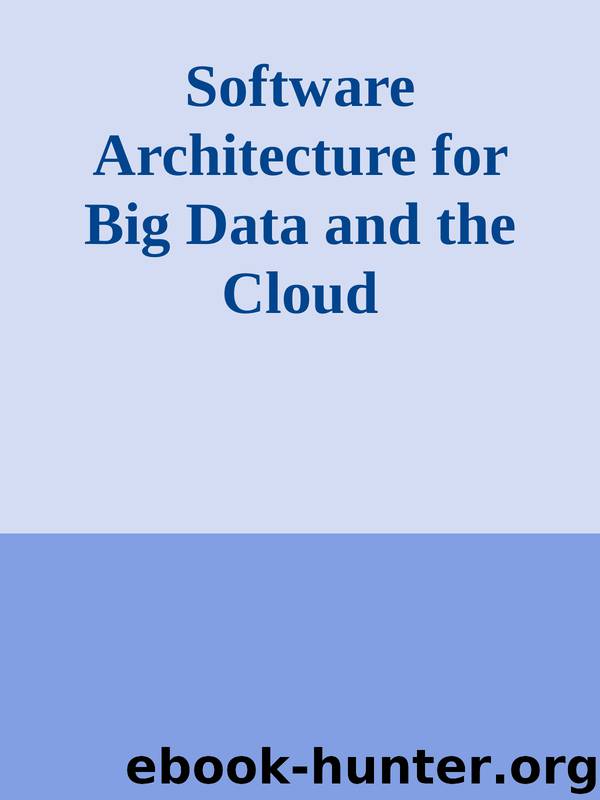Software Architecture for Big Data and the Cloud by Unknown

Author:Unknown
Language: eng
Format: epub
Published: 0101-01-01T00:00:00+00:00
Chapter 12
Architecting Cloud Services for the Digital Me in a Privacy-Aware Environment
Robert Eikermann; Markus Look; Alexander Roth; Berhard Rumpe; Andreas Wortmann Software Engineering, RWTH Aachen University, Aachen, Germany
Abstract
Modern cloud-based service architectures have to cope with requirements arising from handling big data such as integrating heterogeneous data sources (variety), storing the large amount of data (volume), keeping up with the frequency of data (velocity), and tolerating errors and faults within the data (veracity). Development of new services must be fast and efficient by reusing already existing services. Reuse and composition of services enable value-added services. Incorporating individual end-user preferences in the service design is important, but raises new challenges regarding privacy. In fact, reuse, composition to value-added services, and fulfilling privacy requirements are hindered by multiple challenges and necessary, yet expensive and error-prone, repetitive tasks. Integration of heterogeneous data sources demands for the identification of a common data model and integration of, typically heterogeneous third-party, data sources. This usually entails that users have to provide much of their personal data to the service, thus losing control over their data. Apart from the loss of control, users also have to give the same content to different services multiple times. In case the content changes they have to update it in several places. The developer has to deal with these problems for every new service under development. We discuss the technical constituents of modern cloud-based service architectures. For each constituent of the modern cloud-based service architecture, we identify target technology-specific parts, parts containing the services' logic, and parts specific to the using service. For those, we identify the possibilities for a generative approach. This classification of parts enables us to analyze what parts of such a modern cloud-service architecture can be automatically generated or at least systematically derived.
Download
This site does not store any files on its server. We only index and link to content provided by other sites. Please contact the content providers to delete copyright contents if any and email us, we'll remove relevant links or contents immediately.
Exploring Deepfakes by Bryan Lyon and Matt Tora(8280)
Robo-Advisor with Python by Aki Ranin(8232)
Offensive Shellcode from Scratch by Rishalin Pillay(6382)
Microsoft 365 and SharePoint Online Cookbook by Gaurav Mahajan Sudeep Ghatak Nate Chamberlain Scott Brewster(5606)
Ego Is the Enemy by Ryan Holiday(5293)
Management Strategies for the Cloud Revolution: How Cloud Computing Is Transforming Business and Why You Can't Afford to Be Left Behind by Charles Babcock(4525)
Python for ArcGIS Pro by Silas Toms Bill Parker(4456)
Elevating React Web Development with Gatsby by Samuel Larsen-Disney(4175)
Machine Learning at Scale with H2O by Gregory Keys | David Whiting(4175)
Liar's Poker by Michael Lewis(3368)
Learning C# by Developing Games with Unity 2021 by Harrison Ferrone(3333)
Speed Up Your Python with Rust by Maxwell Flitton(3277)
OPNsense Beginner to Professional by Julio Cesar Bueno de Camargo(3249)
Extreme DAX by Michiel Rozema & Henk Vlootman(3235)
Agile Security Operations by Hinne Hettema(3160)
Linux Command Line and Shell Scripting Techniques by Vedran Dakic and Jasmin Redzepagic(3150)
Essential Cryptography for JavaScript Developers by Alessandro Segala(3120)
Cryptography Algorithms by Massimo Bertaccini(3056)
AI-Powered Commerce by Andy Pandharikar & Frederik Bussler(3021)
